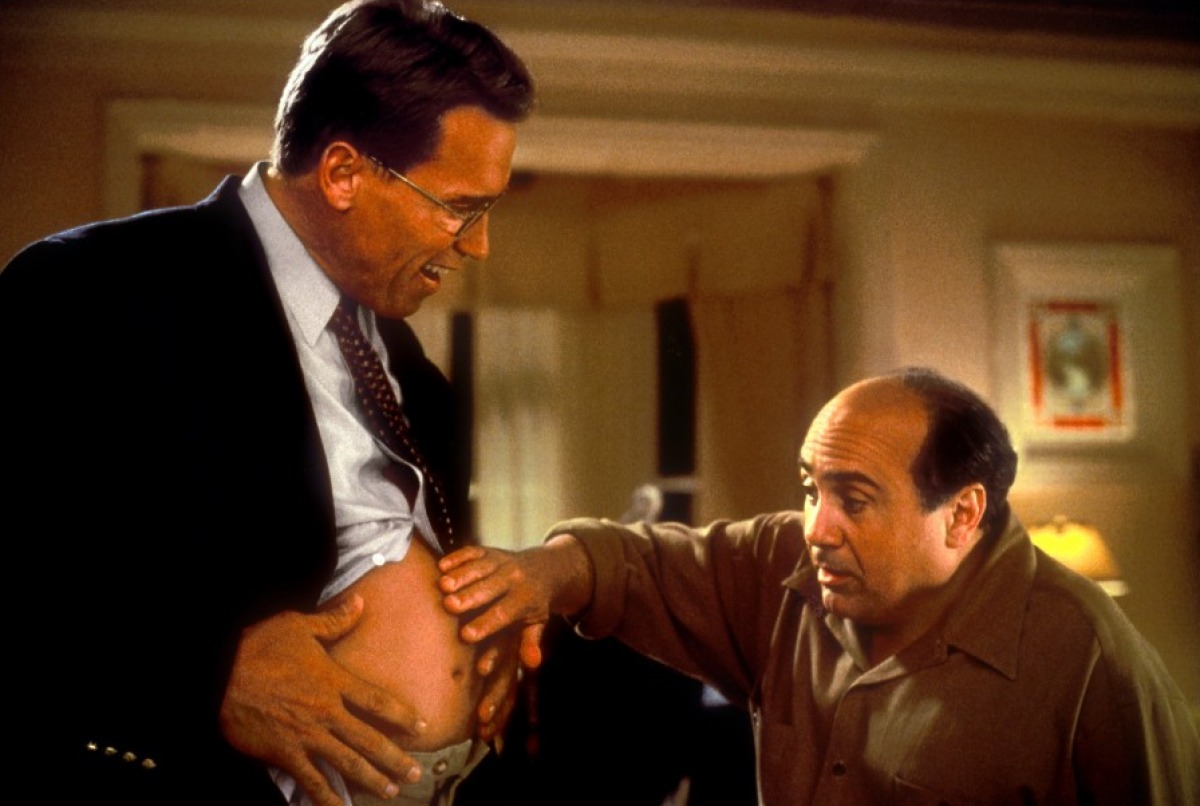From the Chicago Reader (November 25, 1994). — J.R.


* MARY SHELLEY’S FRANKENSTEIN
(Has redeeming facet)
Directed by Kenneth Branagh
Written by Steph Lady and Frank Darabont
With Kenneth Branagh, Robert De Niro, Helena Bonham Carter, Tom Hulce, Aidan Quinn, Ian Holm, Richard Briers, and John Cleese.
* JUNIOR
(Has redeeming facet)
Directed by Ivan Reitman
Written by Kevin Wade and Chris Conrad
With Arnold Schwarzenegger, Danny DeVito, Emma Thompson, Frank Langella, Pamela Reed, and Judy Collins.


Through a perverse coincidence, Kenneth Branagh and his wife, Emma Thompson worked simultaneously, on separate continents, on two lousy features about men usurping the reproductive roles of women. In many respects, these movies are radically different: Branagh’s pre-Thanksgiving turkey, misleadingly titled Mary Shelley’s Frankenstein, is the umpteenth screen adaptation of what is arguably one of the greatest feminist novels and perhaps the first serious example of science fiction. Thompson’s movie, a Thanksgiving release, is a Ivan Rietman “family-values” fantasy-comedy about Arnold Schwarzenegger becoming pregnant — a high-concept obscenity that seems inspired by the combined successes of Twins (which also starred Schwarzenegger and Danny DeVito) and Tootsie (which also contrived to show how men make better women than women, a project also taken up by The Crying Game). Read more
From the May 1981 American Film. This is the third and last of my Resnais interview pieces from this period to be posted on this site . — J.R.



“You know, for all European kids of my age, America was a kind of fairyland,” recalled fifty-eight-year-old Alain Resnais on a recent trip to the United States. “We were born with the idea that there was another kind of country where everything was easy and perfect, like cartoon films, and there was a lot of money and freedom. I remember that when I was ten and I was looking at the French flag, I didn’t feel a thing. But when I was looking at the American flag, my heart was really beating.”
The French director also remembered that in his youth every French child had a distant relative who had gone off to America and was never heard from again. (In his own case, this was a great-grandfather who had disappeared into the wilds of Virginia.) The typical fantasy would be that the missing relative had made a fortune and would one day return to solve every problem. It’s the concept alluded to by the title of — and briefly mentioned by all three leading characters in — Mon Oncle d’Amérique, Resnais’ eighth and most recent feature, and his first major commercial success. Read more
This essay was commissioned in fall 2018 for an exhibition devoted to Michelangelo Antonioni in Tehran curated by Sami Astan. — J.R.

[Antonioni’s] trilogy was concerned with differing aspects of love as the medium of hope in our world. This film [Red Desert] is stripped to naked essence — hope or nonhope unadorned: the prospect of human life in the midst of whirling changes. We live, as we know, in the age of the swiftest transition in history, and all indications are that the speed of change will increase: in everything from household appliances to concepts in philosophy, the whole architecture of thought. Antonioni seems to be saying, without effervescent cheeriness, that what was valuable can be preserved or can be transmuted to a new viability: that the future may contain new, at present inconceivable, values. — Stanley Kauffmann, The New Republic, March 23, 1963
There seems little doubt that Red Desert (1964) represented a major turning point in both the art and the career of Michelangelo Antonioni, and not only because it was his first film in color. Read more








